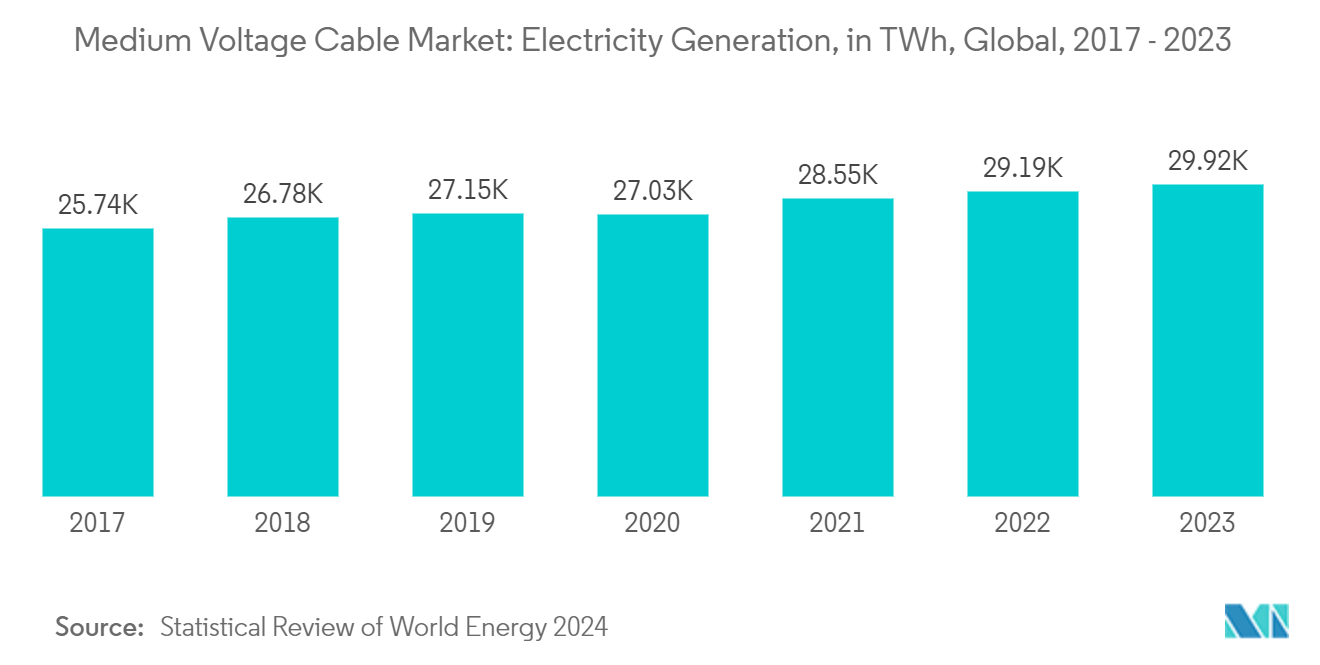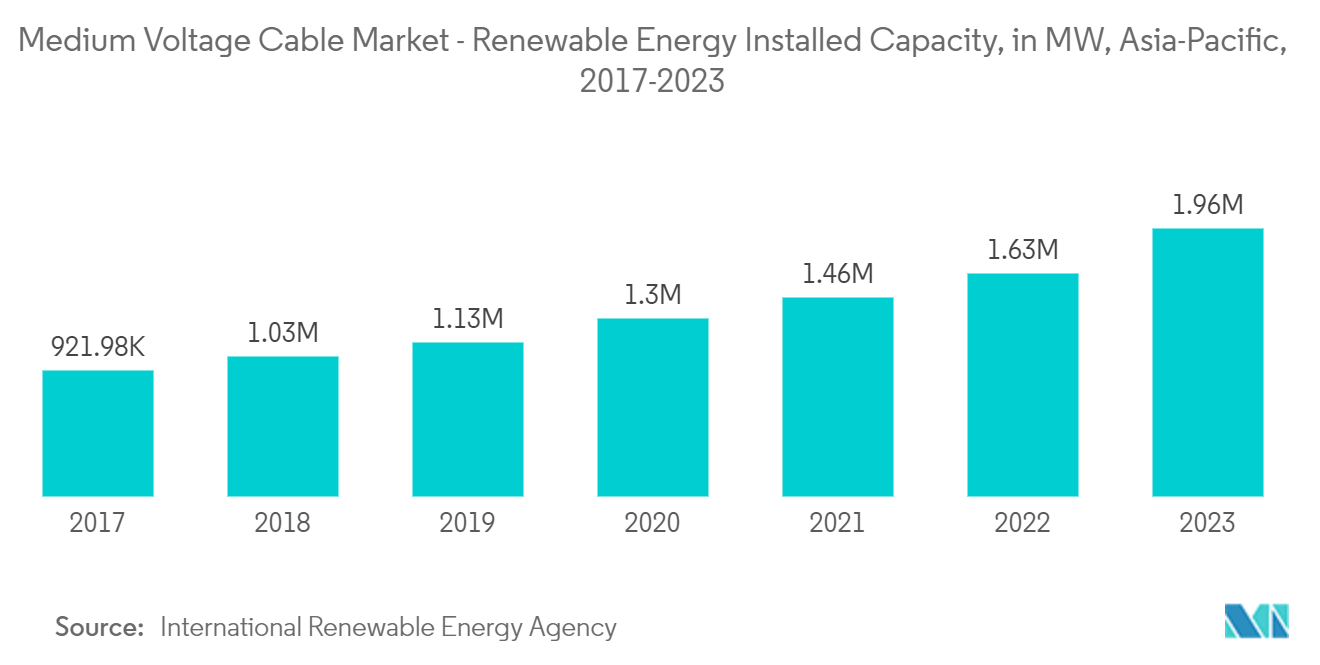Market Trends of Medium Voltage Cable Industry
The Underground Segment to Witness Significant Growth
- In urban areas, underground cables are more favored as above-ground space constraints. Owing to growth in urbanization and renewable energy projects across various economies worldwide, the installation of underground cables has gained traction, where overhead cables or underwater cables may endanger lives and pose economic constraints.
- Underground cables are a safe and reliable source of electricity transfer. Their capacity ranges from low to medium voltage levels. Owing to their robust manufacturing and materials, underground cables are less prone to faults than their counterparts. Moreover, they can be repaired quickly.
- Countries such as Germany are increasingly installing underground power cables to serve the power demands of large and small consumers. For instance, in November 2023, construction of a 300 km underground HVDC transmission cable commenced in South Germany. The transmission route known as an A-Nord is expected to facilitate 2000 MW of wind energy to Osterath from the North Sea Port. Such developments highlight the expanding underground cable market in Europe.
- The rise in electricity generation owing to electricity demand from end-consumers and the increase in an alternative source of energy is likely to lead to the growth of the medium-voltage cable market in future years. As per the Statistical Review of World Energy, electricity generation in 2023 stood at over 29,924.8 terawatt-hours, an increase of roughly 2.5% from the previous year.
- Therefore, based on the above-mentioned factors, the underground segment in the market studied is likely to witness significant growth during the forecast period.

Asia-Pacific to Dominate the Market
- Asia-Pacific has emerged as one of the major medium-voltage cable markets in recent years. The rise in energy demand associated with urbanization, economic modernization, and better living standards across the region has resulted in the growth of sustainable power systems, which, in turn, has increased the demand for the medium-voltage cable market in this region.
- Many countries in Asia-Pacific require more transmission and distribution (T&D) networks, and electricity is not available in some remote and rural areas. The region is investing heavily in building a transmission line network to bring electricity to these areas. Vietnam is also replacing the power cables from overhead to underground in two of its major cities, Ho Chi Minh City and Hanoi. Besides deploying underground cables on major roads, the exercise has also been extended to passages within the cities. The overhead cable replacements are expected to take place between 2020 and 2025, driving the market for underground cables.
- In addition, many countries, such as India, have felt the need to have a dedicated transmission corridor to evacuate growing intermittent renewable energy electricity to end-consumers. This has driven the deployment of medium-voltage cables in Asia-Pacific. According to the International Renewable Energy Agency, the installed capacity of clean energy sources in the region in 2023 stood at 1,961,099 MW, an increase from the previous year's 1,633,347 MW.
- In countries such as India, the power transmission and distribution grid has been experiencing significant gradations and modifications to make it capable of transmitting to the agriculture sector (and other sectors as well). For instance, in May 2023, the Gidderwindi region in Punjab witnessed the installation of a 66 kV transmission line and substation to ensure uninterrupted power supply to farmers during the paddy sowing season. Similar projects are likely to be rolled out in the future to eradicate power supply issues in India.
- Therefore, factors like expansions and upgrades, especially in Asia-Pacific, are expected to have a positive impact on the medium-voltage cables market during the forecast period.


